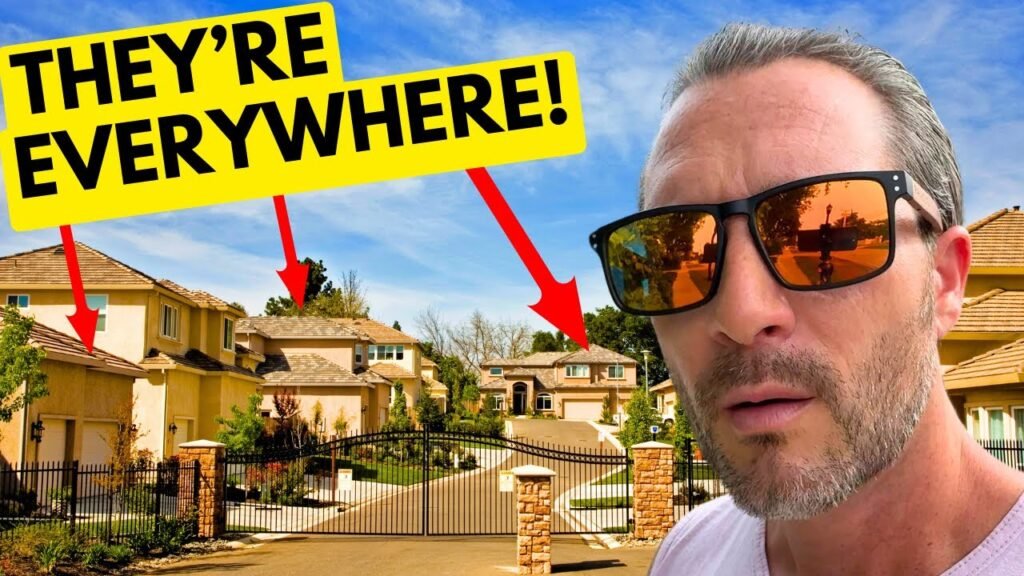HUGE PROBLEM! HOA’S are RUINING THE HOUSING MARKET!
Hey there! Did you know that about 30% of people in the United States live in an HOA community? That’s over 75 million people! It’s a topic that’s gaining popularity, and it’s causing quite a stir in the housing market. In fact, according to the U.S. Census Bureau, a whopping 84% of newly built homes sold in 2022 were part of an HOA community. However, this inclusion of HOA communities is seen as a huge problem by video creator Michael Bordenaro, who believes it’s being forced onto Americans without their consent, much like the introduction of electric cars. This raises questions about the potential effects of HOAs on the future of the housing market. The video creator offers 1 on 1 calls and encourages viewers to sign up for their email list for weekly video updates. So buckle up, because we’re about to dive into the impact of HOAs on the housing market.
Now, let’s talk numbers. The number of homes in HOA communities has significantly increased over the years, with a massive jump from just 177% in 2011 to a staggering 66% in 2022. That’s a massive increase in a relatively short period of time. And it’s not just the number of homes that’s growing exponentially—there’s also been a surge in the number of HOA communities themselves. In 1970, there were around 10,000 HOA communities in the United States, but by the 2020 census, that number had skyrocketed to 355,000. In fact, the graph showing this growth since 1970 is absolutely staggering. However, the introduction of HOAs into the housing market is not solely the doing of home builders. Local governments often require new developments to be in HOAs, shifting responsibilities onto the homeowners. This has led to concerns over the fairness of it all, as homeowners are paying high property taxes but not receiving the services they’re paying for from their actual city. All of this has left homebuyers and renters alike wondering if they can handle living in an HOA and if the benefits are worth the potential downsides.
The Inclusion of HOA Communities in the Housing Market
HOA communities have become increasingly prevalent in the housing market, with 84% of newly built homes sold in 2022 being part of an HOA community, according to the U.S. Census Bureau. While this may indicate a growing trend in homeowners’ associations, there is a perception that the inclusion of HOA communities is problematic. The video creator suggests that the presence of HOAs is being forced onto Americans without their consent, likening it to the introduction of electric cars. This raises questions about the potential effects of HOAs on the future of the housing market.
The Controversy Surrounding HOAs
Comparisons have been made between the forceful introduction of HOAs and the introduction of electric cars. Both are seen as impositions on individuals’ choices and preferences. The debate surrounding HOAs centers on the potential effects they may have on the housing market. Some argue that HOAs limit individuals’ freedom to choose where they can live, while others believe they provide necessary regulations for maintaining property values.

The Growth of HOA Communities
Approximately 30% of people in the United States currently live in HOA communities, which equates to over 75 million people. Over the years, there has been a significant increase in the number of homes within HOA communities. In 2011, only 17% of newly completed homes were part of an HOA, compared to 66% in 2022. This exponential growth in HOA communities since 1970 is evident when considering the number of HOA communities in the United States, which has risen from 10,000 in 1970 to 355,000 in 2020.
Elimination of Choices in Housing
One of the main concerns surrounding HOA communities is the perception that they reduce the freedom to choose where people can live. With the majority of newly built homes being part of an HOA, individuals looking for housing options may find it increasingly difficult to find a home that does not fall under HOA regulations. This can limit the range of housing choices available to potential homeowners or renters.

Financial Aspects of HOAs
HOA communities typically come with monthly fees that residents are required to pay. The typical monthly HOA fee in a single-family home community ranges from $200 to $300. These fees cover various costs, including maintenance of common areas, amenities, and services provided by the association. It is essential for individuals considering living in an HOA community to factor in these additional costs when budgeting for homeownership or rental expenses.
Government Involvement in HOAs
In many cases, local government requirements mandate that new developments be part of HOAs. This is often done to shift responsibilities, such as infrastructure maintenance and other services, from the city to the homeowners. By doing so, local governments can continue to collect high tax dollars while transferring the burdensome tasks associated with community maintenance to HOAs. However, this can lead to homeowners shouldering additional financial responsibilities beyond property taxes.

Debate on the Benefits and Downsides of HOAs
There is a debate about the benefits and downsides of living in an HOA community. Some individuals express satisfaction with their HOA experience, citing the protection and enhancement of property values, as well as the support provided by the elected governing board and community managers. On the other hand, a separate study revealed that about half of homeowners with an HOA dislike the arrangement, with around 30% feeling that their HOA has too much power. Poorly run HOAs can lead to issues and financial problems for homeowners, highlighting the need for efficient management and fair regulations.
Different Types of HOAs
HOAs can vary depending on the type of property, such as townhouses or high-rise condos. Townhouse HOAs may have lower fees and offer different conveniences compared to high-rise condo HOAs. Comparing fees and the specific amenities provided by different types of HOAs can help individuals determine the best fit for their preferences and financial capabilities.
Conclusion
The inclusion of HOA communities in the housing market has become increasingly prevalent. However, there remains controversy and differing opinions on the effect of HOAs on the housing market and individual freedom of choice. While some individuals express satisfaction with their HOA experience, others dislike the arrangement and perceive issues with the concentration of power. It is essential for individuals considering living in an HOA community to carefully evaluate the benefits and downsides, as well as the associated financial aspects. By understanding the implications of living in an HOA community, individuals can make informed decisions about their housing choices.




